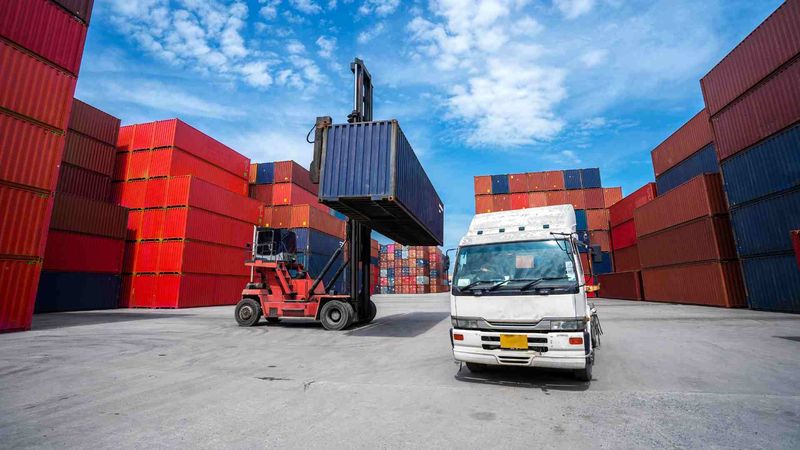In today's interconnected global economy, efficient logistics management is crucial for businesses involved in container drayage. Drayage, which refers to the transport of goods over short distances, often between ports, terminals, or other intermodal hubs, plays a pivotal role in supply chain operations. This article explores the importance of effective drayage logistics management and provides actionable tips and recommendations to enhance operational efficiency.
Importance of Effective Logistics Management
Effective logistics management is the backbone of successful drayage operations. It encompasses the planning, implementation, and control of the flow of goods, information, and resources from point of origin to point of consumption. For container drayage specifically, streamlined logistics ensure timely delivery, minimize costs, optimize routes, and enhance overall supply chain performance.
Key aspects of effective logistics management in container drayage include:
-
Optimal Route Planning: Efficient route planning reduces transit times, fuel costs, and environmental impact. It involves selecting the most direct and least congested routes, considering factors such as traffic patterns, road conditions, and regulatory requirements.
-
Process Optimization: Streamlining operational processes such as loading/unloading, documentation, and communication between stakeholders (e.g., ports, carriers, and shippers) reduces dwell times and improves overall productivity.
-
Partner Collaboration: Effective collaboration with partners, including carriers, freight forwarders, and terminals, fosters a seamless flow of information and resources. Clear communication and shared goals enable better coordination and problem-solving.
Now, let's delve into specific tips and recommendations to achieve these goals effectively.
Key Tips for Managing Container Drayage Logistics
Route Planning
Optimizing routes is essential for minimizing transportation costs and improving delivery times. Here are some strategies:
-
Utilize Route Optimization Software: Invest in advanced route optimization software that considers factors like traffic patterns, tolls, and weather conditions to suggest the most efficient routes.
-
Real-Time Monitoring: Implement GPS tracking and real-time monitoring systems to track vehicles and adjust routes dynamically based on traffic updates or unexpected delays.
-
Alternative Routes: Identify alternative routes and develop contingency plans to avoid disruptions caused by road closures, accidents, or construction.
Process Optimization
Efficient processes contribute significantly to overall logistics effectiveness. Consider these optimizations:
-
Automated Documentation: Use electronic documentation systems to reduce paperwork and streamline customs clearance and regulatory compliance processes.
-
Cross-Docking: Implement cross-docking strategies to reduce storage costs and minimize handling by transferring containers directly between inbound and outbound vehicles.
-
Load Optimization: Maximize container utilization through effective load planning and consolidation to minimize empty space and reduce shipping costs.
Partner Collaboration
Collaboration with key stakeholders is vital for seamless drayage operations. Here’s how to enhance collaboration:
-
Integrated Information Systems: Implement integrated information systems that allow real-time data sharing between carriers, shippers, and terminals to enhance visibility and coordination.
-
Joint Planning and Scheduling: Work closely with carriers and terminals to align schedules and optimize container pickup and delivery times, minimizing wait times and enhancing efficiency.
-
Performance Metrics: Establish clear performance metrics and KPIs (Key Performance Indicators) to evaluate the performance of partners and identify areas for improvement collaboratively.
Examples of Successful Logistics Management by YK Freight
YK Freight has exemplified effective logistics management in container drayage through several strategic initiatives:
-
Technology Integration: YK Freight integrated advanced GPS tracking and route optimization software, resulting in 20% reduction in fuel costs and 30% faster delivery times.
-
Collaborative Partnerships: By fostering strong partnerships with local carriers and terminals, YK Freight improved operational flexibility and reliability, reducing lead times by 15%.
-
Process Innovation: YK Freight implemented automated documentation systems and cross-docking strategies, significantly reducing paperwork and handling costs while improving overall throughput.
Conclusion
In conclusion, effective container drayage logistics management is pivotal for enhancing supply chain efficiency and maintaining competitive advantage in today’s global marketplace. By implementing strategic route planning, optimizing operational processes, and fostering collaborative partnerships, businesses can streamline drayage operations, reduce costs, and improve service levels.
Call to Action: Improve Your Logistics with YK Freight
To optimize your container drayage logistics and achieve similar success to YK Freight, consider adopting advanced technologies, optimizing processes, and enhancing collaboration with key stakeholders. By continuously refining your logistics strategies, you can drive operational excellence and meet the evolving demands of the modern supply chain landscape.
Incorporate these tips and recommendations into your logistics management practices to unlock new efficiencies and propel your business towards sustained growth and success in container drayage operations.






ASK YOUR QUESTIONS